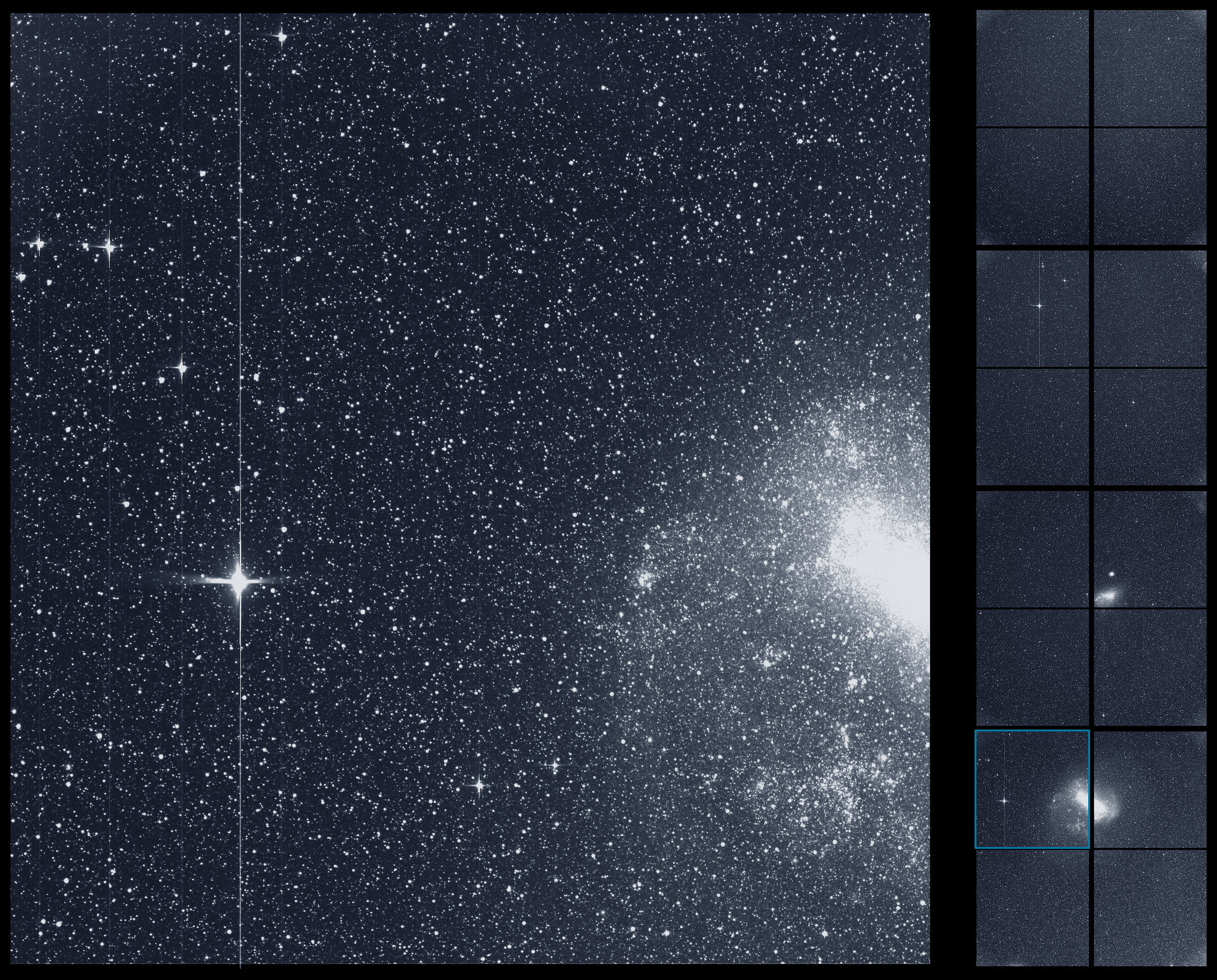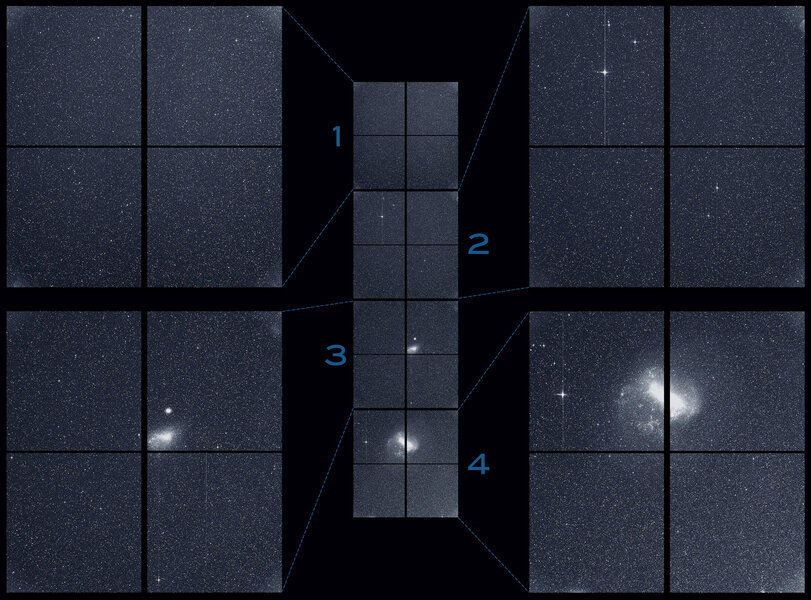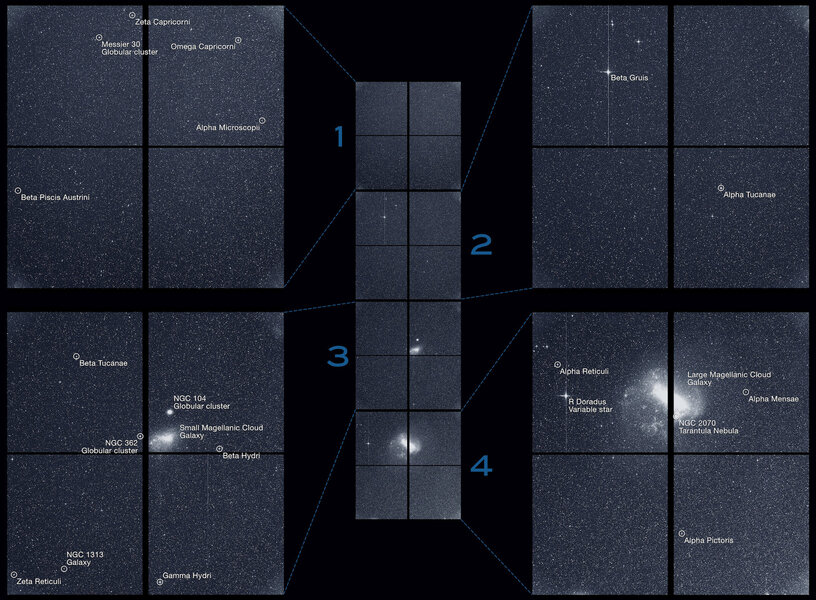Create a free profile to get unlimited access to exclusive videos, sweepstakes, and more!
TESS is now doing science. Really BIG science.

NASA next great planet hunter is now open for business! TESS — the Transiting Exoplanet Survey Satellite — began taking science observations of the sky on August 7, 2018, after nearly four months in space and checking itself out to make sure it’s operating properly. TESS’s mission is to look for exoplanets (alien planets orbiting other stars) around the 200,000 or so brightest stars in the sky. It scans them over and over again, looking for small dips in the brightness of each star indicating an orbiting planet has passed in front of it, in essence making a mini-eclipse.
It employs four cameras, really as much like very large and very fancy telephoto lenses as proper telescopes, taking images of truly huge swaths of the sky. Each camera has four digital detectors in it in a 2x2 array, and that results in a field of view a whopping 24° on a side — the full Moon is a half a degree across, so they could see 48 Moons lain side to side. The cameras are arranged so that each square of sky they see is stacked into a long 1x4 rectangle, producing a final image that’s 24° x 96°, a magnificently vast patch of sky.
I know that sound a little confusing, but hey! A picture is worth 1 kiloword:
That right there, folks, is the very first science image TESS took. In the middle is a small version of the final rectangular stack; you can see the square fields covered by each camera (labeled 1 – 4 top to bottom), and the four detectors in each camera. Offset to the left and right are closeups from each camera.
There’s a lot going on in this stack! Dominating the view in cameras 3 and 4 are the Small and Large Magellanic Clouds, a pair of irregular dwarf satellite galaxies of our Milky Way (though the LMC has features resembling a spiral galaxy). They lie about 160,000 light years from us and are easily visible to the naked eye from a dark spot — but you have to be in the southern hemisphere to see them; they never rise for those of us north of about 20° N latitude.
Also, obviously, there are about a bazillion stars in this stack, many of which are visible to the naked eye as well. Here’s a labeled version of that image:
The two brightest stars are Beta Gruis (which is about the same brightness as one of the brighter stars in the Big Dipper) and R Doradus. Both are just under 180 light years away, so pretty close to us relatively speaking. They’re so bright they saturate the camera detectors. That means the detectors see so many photons from those stars the pixels overflow, like a bucket collecting rain too quickly. Due to the electronics, the charge collected in the pixel overflows into the pixels above and below it, creating those vertical lines, called blooming.
They way TESS collects data is pretty interesting. Each camera takes a series of 2-second exposures, which are stored on board. After ten are taken, the images are added together to create a 20-second exposure, and the brightnesses are measured and recorded for about 1,000 pre-chosen stars in the field. These stars are being monitored to look for rapid brightness changes, so that astronomers can learn about how gas is moving on their surfaces — this is called astroseismology, and we use this to learn more about the structure and sizes of stars.
After 60 exposures are taken, they are added together to create a two-minute exposure, and then the brightnesses of several thousand stars are measured and recorded. These are the stars where we’re looking for exoplanets. That’s the data that will be used to look for the tell tale dips in brightness caused by a transiting exoplanet.
Then, after 1800 exposures are taken, these are added together to create a 30-minute total exposure. This final frame, as it’s called, is recorded to memory on board along with the star measurements. Then all the two-second images are erased, and the process starts again. These data are stored until the elliptical orbit of the spacecraft brings it close enough to Earth (u once every two weeks) to transmit the data to the ground. The very first 30-minute final frame TESS took is what you see above.
Mind you, this is one section of the sky, a sector that’s 24° x 96°. Over the course of one year TESS will monitor 13 such sectors in the southern hemisphere, eventually covering the whole hemisphere, staying at each one for about 27 days before moving on to the next (essentially moving “sideways” about 24° to move to the next area of sky; it’s already on Sector 2 now). Then, after a year, it’ll point toward the northern hemisphere and do the whole thing again. The initial mission will therefore last for two years, and cover almost the entire sky, looking at 200,000 stars in total for exoplanets.
Given what we’ve learned about exoplanets from previous searches (like with Kepler), TESS is expected to find anywhere from 4,500 to upwards of 20,000 such worlds. Mind you, the first exoplanet was discovered in 1992, and we’ve found roughly 4,000 more in the 26 years since then. TESS will likely double that number in just two years.
And that’s just the primary mission. If it’s successful I expect NASA will extend the mission, possibly for many years. On top of that, just having this vast amount of data means a lot of other astronomy can be done as well, including monitoring millions of stars at the half-hour cadence of the final stack imaging. Like with the incredible survey mission Gaia, it’s hard to know exactly what that treasure trove will have in it. But I can guarantee a lot of astronomers will be sifting through it to find out.
We’re about to discover a lot of strange, new worlds. What else will we find?

















